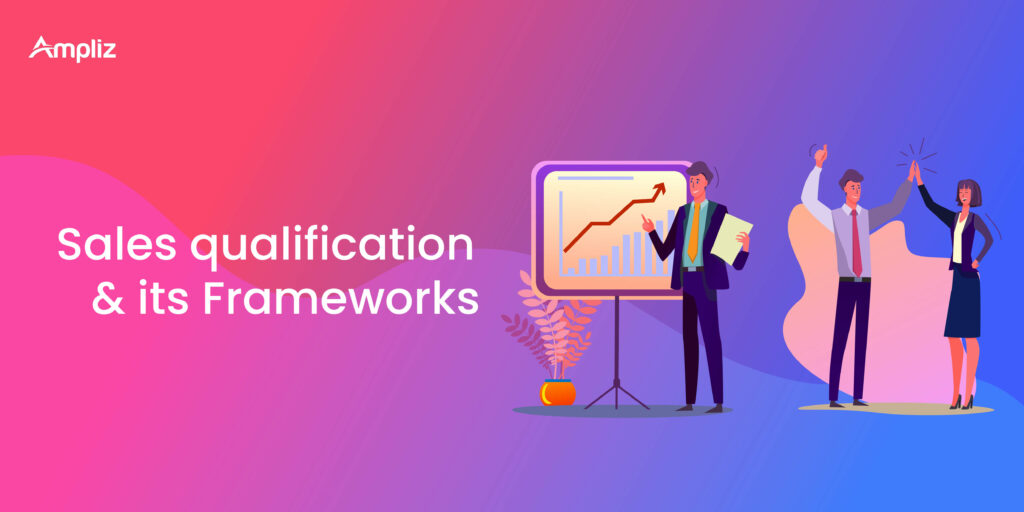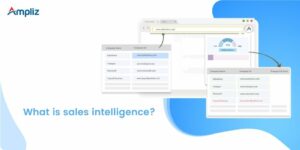Selling a service or product is like building a relationship. You need to meet the right person at the right time. The question here is, what qualifies (sales qualification) a prospect as the right opportunity. Connecting with a prospect too early won’t cut, and you will be very likely to lose the deal. Waiting too long, you might lose the opportunity to a competitor.
Sales qualification is a process that ensures any lead that sales get are qualified for or have high potential to become your customer. Or, your customer can fully utilize the product or service you provide.
Many sales qualification frameworks developed over time as the businesses evolved. Moreover, the evolution of SaaS-based organizations made groundbreaking changes to organizational structure and culture. They broke away from the traditional way of functioning. It gave rise to various sales qualification frameworks like BANT, BANTA, MEDDIC, ANUM, CHAMP, and GPCTBA/C&I.
Each of the aforementioned frameworks are used for qualifying marketing qualified leads (MQLs) to sales qualified leads (SQLs). It is upon the businesses to decide and choose what works for them. Here we will try to understand sales qualification and also throw some light on the different frameworks that aid in the qualification of prospects.
What is Sales Qualification?
The process or steps of evaluating a potential prospect against a detailed set of factors that determine customer-product-fit is called sales qualification. It helps to understand if the opportunities presented before us possess the traits we are looking for, which can make them an excellent fit to use your product or service to the fullest.
Sales qualification is an essential process that helps sales teams in determining which leads they need to prioritize first and which are to be discarded now or to be kept for the future. Therefore, various qualification frameworks have been developed and implemented over the years to make the lead qualification process more straightforward, more relaxed, and implementable. Many new sales qualification frameworks have been developed as business operations changed over time.

Sales qualification frameworks beyond BANT
Yes, you read that right. BANT is undoubtedly one of the most popular qualification frameworks out there. But, it is not the only one.
It’s quite intriguing that not many sales professionals know any other framework apart from BANT.
But before taking a look at those qualification frameworks, let’s have a look at what BANT really is.
BANT – The oldest sales qualification framework
BANT is one of the oldest and the most used qualification frameworks in the business as it’s application is not limited to technology but also spans across various verticals of the industry. BANT means Budget, Authority, Need, and Timing. It is a sales qualification framework formulated by IBM in the early 60s.
IBM states that identified opportunities are only admitted after speaking to prospects or clients to determine their business and solution prerequisites. IBM’s direction for opportunity identification is to use a straightforward approach that is BANT. According to the guiding principles set by IBM, an opportunity is worth considering pursuing if the prospect meets at least three out of four of the BANT based criterion.
BANT stands for:
- Budget: How much can the prospects spend?
- Authority: If the prospects have decision-making authority, then find who are they, or is she an influencer?
- Need: What is the prospect’s business need?
- Time frame: In what time frame will the prospect be implementing a solution?
If the prospect does not meet the BANT criteria, the sales representative has the choice to nurture the lead by planning follow-ups with the opening within an agreed specified time frame.
With the mighty BANT out of the way, let’s look at the more modern frameworks out there.
ANUM
The ANUM, developed by Ken Krogue, is a sales qualification framework that makes its roots from the principles from the previously much advocated BANT framework. ANUM process is a reworked version that prioritizes Authority over Budget (or Money).
ANUM stands for Authority, Need, Urgency, and Money. As ANUM is highly focused on lead qualification at a very early stage, a fair amount of pre-qualification becomes imperative as a precursor activity before any outreach. Make sure they fit your ideal customer profile (ICP).
- Authority: Is the lead a key decision-maker for the product purchase.
- Need: Define and identify the inherent need of the prospect.
- Urgency: How soon are they looking to procure the product or service?
- Budget: Are they capable of availing your product or service?
CHAMP – A qualification framework
CHAMP stands for Challenges, Authority, Money, and Prioritization. It is very similar to ANUM that we came across before. However, it places Challenges ahead of Authority.
According to Atiim Inc. founder Zorian Rotenberg “Your prospect buys things because they have a challenge. Challenges are the first fundamental part of sales qualification.”
The CHAMP process defines the Authority as a catalyst as a not a deterrent. Depending on the type of contact, “ask your prospect the relevant questions that can aid you to map out their company’s organizational structure and try to find out what inherent problem you can help them solve.” CHAMP is one of those sales qualification frameworks that will help you to determine who to reach out to next and do it effectively.

GPCTBA/C&I
GPCTBA/C&I stands for Goals, Plans, Challenges, Timeline, Budget, Authority, Negative Consequences, and Positive Implications. Hubspot coined this acronym. It is a sales qualification framework devised on having an effective response to changing buyer behavior. It makes sure salespeople not only sell products and services but also add value during sales.
A salesperson using this system tries to understand the problem lying underneath the surface of the visible disturbances. What I mean by that is a salesperson is given the opportunity to at each step of the process understand customers’ strategic goals, business model, and how your product can become part of the bigger things at play.
- Goals: Find, clarify, and set goals with your prospect and help them in defining it.
- Plan: Determine the strategies of your customers, both current and future. Be zealous to find out what has worked and has not worked in the future and why.
- Challenges: Define your prospect’s problems and reinforce that the way things are now it isn’t working in their favor. It is crucial. Till they understand that they need help, a lead won’t become a customer.
- Timeline: Time is the most valuable asset you have. It helps you prioritize and prepare your lead list.
- Budget: Here, you don’t ask the amount of budget your prospect has instead justifies their investment in your product or service. The reason is for SaaS Products, which cost more or less 500 US Dollars a year budget is not a constraint. The budget is time. Are you worth their time?
- Authority: Here, it is not about finding the key decision-maker for the procurement of your product. It is about finding the person
- Who is going to make the economic buying decision?
- What are his priorities?
- What are his concerns?
- Negative Consequences and Positive Implications: It is this part of the sales qualification framework that separates it from other sales qualification processes. Here you allow your prospects to understand:
- What are the repercussions of the plan, not going the way they supposed to be?
- What are the benefits if everything goes according to the plan?
MEDDIC – One of the modern sales qualification frameworks
MEDDIC stands for Metrics, Economic Buyer, Decision Criteria, Decision Process, Identify Pain, and Champion. Jack Napoli forged it at PTC. MEDDIC requires sales representatives to understand all the aspects of a target company’s purchase process, down to whether you have an internal product evangelist – an employee at a prospective company who will internally sell your product.
The credibility of the MEDDIC process lies in for better forecasting accuracy, something that is crucial for B2B companies — after all, losing a single deal can be crippling when each contract is worth in millions of dollars.
Consider using MEDDIC as a sales qualification framework if your company sells a product that requires a behavioral transformation or average ticket price is exceptionally high, perceptive to exactly how a prospect buys, why they buy, and who’s advocates you internally is crucial to maintaining a precise pipeline.
BANTA
Salesforce developed BANTA – one of their sales qualification frameworks. It only adds another attribute to BANT called Attitude. The attitude here is the measure of intent, the intent of the buyer to procure your product. The intention is defined by how well they consume your content, what is the kind of interactions or engagements are in place.
According to Salesforce, the deeper the conversation better the attitude. More in-depth discussion means how well the salesperson understands the current and future strategy of the consumer. Therefore, it tries to align the product to the customer and not force-fitting the customer to the product. It helps in converting MQLs to better SQLs.
Choose a sales qualificaiton framework that suits your business
While it might be too big and demanding of an undertaking to implement all the sales qualification frameworks and strategies outlined here, they are an efficient jumping-off point for making your lead qualification more accurate and capable.
An enhanced leads qualification process helps in two main functions: to estimate whether or not an opportunity is worth pursuing and work on a proposal and to help sales reps tailor that offer for the maximum effectiveness.
The first step of sales qualification is to generate a lead score based on engagement the prospective customers had with your website, emails, and social media posts and activities. The second step is making a discovery call to find, understand, and outline their requirements, purchasing authority, and purchasing power.
While this may seem comparatively straightforward, there’s a lot of data and other elements that need attention in computing a lead score. Thankfully, there are several diverse kinds of sales qualification frameworks and software out there that can aid you to gather, analyze, and estimate that lead score for you. In the statute of a small-time gap, you’ll be filling your pipeline with qualified prospects and winning more accounts.




